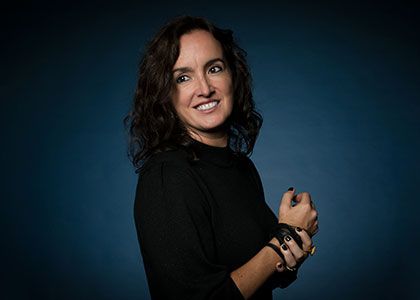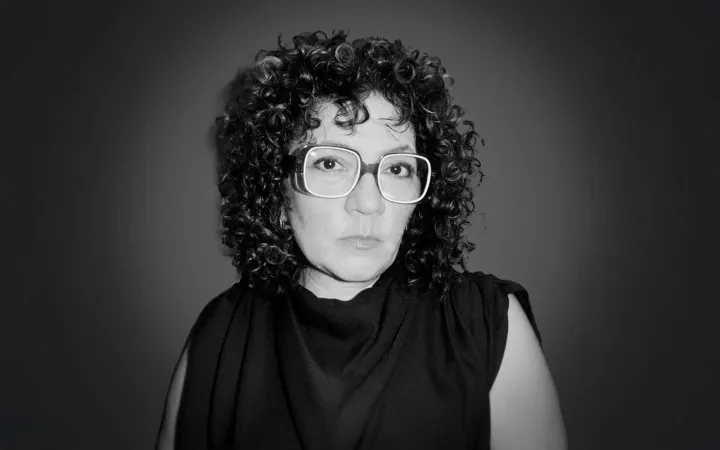
Por Jimena de Gortari
Volé hace algunos días junto a una madre y su niña de 18 meses, la bebé gritaba incómoda. El vuelo era temprano y ella estaba cansada. Mi primera reacción fue resoplar pensando en el vuelo que me esperaba, respire hondo mientras la madre trataba de hacer todo por tranquilizarla. Busqué su mirada y hacerle gestos a la bebé que me miraba curiosa. Una vez calmada me puse a platicar con su madre, intenté transmitirle tranquilidad con un “estuve ahí, sé lo que se siente, es normal”. La bebé durmió durante todo el vuelo. La anécdota viene a cuento por un debate en Twitter en donde se discutía si era adecuado llevar a niños menores a un museo. Me pregunto si, en una ciudad ¿debería de haber espacios de uso público que restrinjan el acceso a los menores? ¿las voces, gritos y emociones de los niños pueden ser consideradas como ruido?
Planificar pensando en espacios públicos o de uso público con restricciones de acceso para algunas personas es contrario a las ideas que deberían primar en su diseño, uno que esté pensado para toda la población, en particular las más vulnerables. El diseño de la ciudad debe estar pensado para todos y, en particular, debe de incorporar las necesidades de los niños, considero que son quienes las suavizan. Sus voces, gritos y risas nos recuerdan nuestro ser humanos. Hace poco me contaban de una ciudad sin niños en las que se recreaban sus voces en el transporte público: anunciando la llegada o salida o alertando sobre el cierre de puertas; es una necesidad de una ciudad viva. No existen y no deben existir en una ciudad “zonas libres de niños” y sin embargo, las ciudades no les ofrecen el entorno, equipamientos, viviendas y los servicios que necesitan para crecer seguros, libres y sanos. Recordemos que ellos también tienen derechos (Convención sobre los Derechos del Niño) y que las ciudades pensadas con los niños incorporan una perspectiva al análisis del cómo, dónde y porqué. Una ciudad con enfoque a la infancia promueve comportamientos saludables, es segura e inclusiva y fomenta el desarrollo de habilidades para la vida.
Así el diseño de los espacios urbanos para los niños debe contar con lugares para su desarrollo y en donde además de parques y jardines con diversidad de actividades, existan otro tipo de espacios de uso público, como pueden ser los museos. La visita a un museo debería ser pensada para todo público, únicamente restringiendo el acceso a salas por contenido “sensible”, por ser perjudicial sensorialmente (ruido o exceso de público).
Los niños cantan mientras juegan y exploran un espacio, hablan "solos", gritan y silban -cuando han aprendido a hacerlo- todas estas conductas naturales que pueden molestar a una sociedad que para funcionar vive bajo normas que promueven lo contrario. No nacimos adultos, nacimos niños y ojalá, parte de nuestros recuerdos de infancia sean felices. Seguramente en muchos de ellos se incluyen experiencias que ahora nos parecen “ruidosas”: correr con un palo haciéndolo golpear una reja, jugar a la escondidillas y gritar al encontrar a quien se escondía, guarecerse debajo de la ropa en el centro comercial, rodar en el cine frente a la pantalla; en todas ellas seguramente los padres lo pasan mal porque implica ir contra las reglas o porque puede ser molesto para alguien.
Cada persona tiene su propia memoria y todas inician cuando somos niños, vamos aprendiendo de normas de comportamiento, a la prohibición del acceso; la experiencia de la ciudad se va reduciendo. Se estrechan los lugares por la falta de seguridad, también porque la ciudad se piensa en términos de eficiencia. Insisto en la idea de la suavidad que imprime la infancia a una ciudad, sus necesidades son más humanas que las de quienes vivimos con la prisa cotidiana. Son quienes además encuentran nuevas posibilidades de uso a la ciudad y sus formas, quizás sus juegos podrían darnos pautas para el diseño urbano. Nadie lo pasa bien cuando su hijo está rompiendo las reglas que la sociedad tiene escritas para el uso de un espacio, pero insisto que debemos entender –y ser pacientes– porque el disfrute es distinto en las personas de menos edad. Toca comprender y debemos promover la libertad de uso, sobre todo para los espacios públicos o de uso público. Como dato el reglamento contra el ruido en Alemania es uno de los más restrictivos que existen, contemplan la educación, el diagnóstico, la revisión periódica y las estrategias a seguir. Los niños alemanes educados con medidas muy restrictivas en cuanto a la procuración de silencio tienen derecho a hacer ruido porque el ruido de niños jugando es una manifestación apropiada de la infancia y fundamentalmente tolerable en el interés de la preservación de su desarrollo.
Relajémonos un poco, el mundo también es para ellos y si el ruido es un problema de salud pública, pero hay otras fuentes ruidosas contra las que luchar. No queremos a los niños en silencio, que la lucha contra el ruido no confunda sus expresiones y emociones con los decibeles nocivos.

Las opiniones expresadas son responsabilidad de sus autoras y son absolutamente independientes a la postura y línea editorial de Opinión 51.






Comments ()